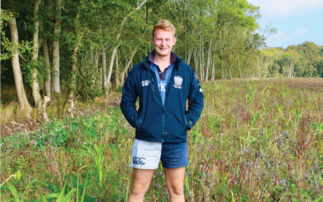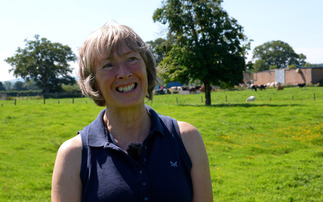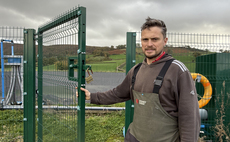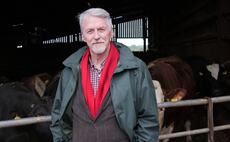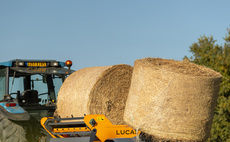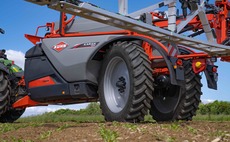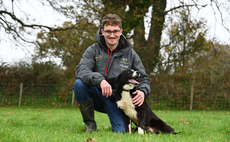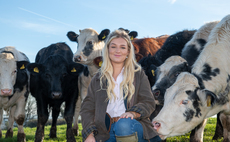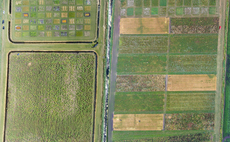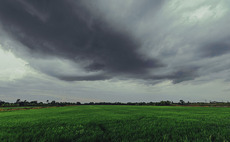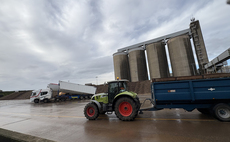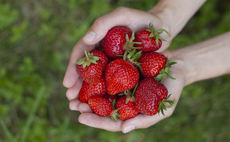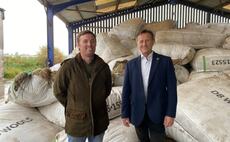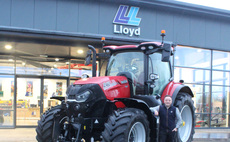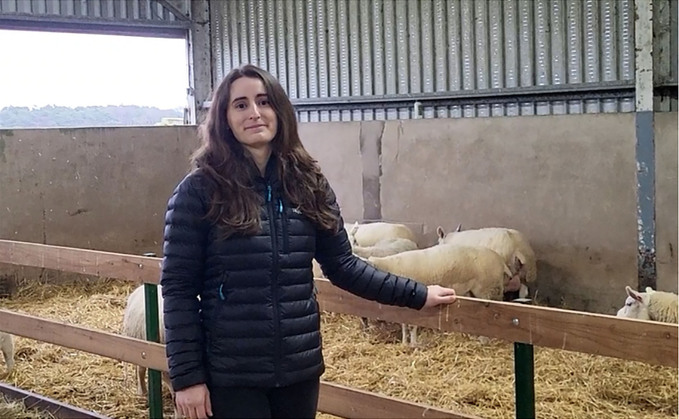
Megan Wetherell is spearheading trials on farm looking at alternative fertilisers.
HOME-produced fertiliser ‘teas' initially peaked Megan Wetherell's interests as a way of eliminating synthetic fertiliser use, but research has shown there could be big benefits to soil health too.
As fertiliser prices skyrocketed last year, she realised the family farm needed to adopt a new approach to fertiliser.
She says: "I decided to enter the competition because the rise of fertiliser prices last year made us start to think about our fertiliser a lot more.
"By having a natural fertiliser it will keep costs down, but also it is looking towards a more sustainable farm as it will have other environmental benefits over synthetic fertiliser inputs.
Megan was awarded funding through the Journey to Net Zero competition run by the School of Sustainable Food and Farming, to investigate the production of these natural fertilisers. The fertiliser tea concept stems around growing specific plants with beneficial nutrients and macerating them with water to produce a nutrient-rich brew which can be applied to land.
Having started from ground zero, she has conducted hours of research, turning to scientists, AHDB and her local Natural England officer to boost her knowledge and learning.
She has also attended numerous industry events, including Down to Earth and The Oxford Farming Conference, as well as taking part in Pasture for Life forums.
An array of conflicting opinions and some pessimism has spurred her on to ensure she researches meticulously and drills down into the science as much as possible.
Compost vs. fertiliser tea
Megan has identified two main processes for producing natural fertiliser: compost ‘tea' and fertiliser ‘tea'.
Compost tea is made when compost is put into water and the nutrient rich liquid produced is then applied to ground. This is supposed to benefit the level of micro-organisms in the tea, however it needs to be applied to land quickly. Fertiliser tea uses fresh plants which are macerated in water.
This is supposed to deliver more nutrients, rather than micro-organisms, and is not restricted by when it can be applied.
Deciding to focus on the fertiliser tea, Megan is hopeful it will deliver on nutrients as well as micro-organisms.
"My plan is to do that mixed with our slurry, but I need to check if that is detrimental to the nutrients," she says, referring to concerns that quality may be lost under anaerobic conditions.

Plant selection
A number of plants are being considered for their nutrient value and other properties. Comfrey will definitely be used in the mix, as it brings an array of potential benefits to soil health. This includes high trace element levels.
She says: "It is a compost activator so it has a lot of potential in it, so it is able to speed up the breakdown of plant matter."
However, it does require careful consideration due to its invasive nature and large plant size. As a result, it is likely a sterile variety will be used to avoid self-seeding. It may also require hand planting as a bare-root plant as there needs to be a two-metre gap between plants.
Other species under consideration include nettles, dandelions and yarrow. She says: "A lot of plants which look like they have a high nutrient value are the ones which would be considered as weeds. I do have concerns over weed spread. That is why the process has taken so long as it needs to deliver on nutrients, but also needs to be controllable."
Some plants, such as Tansy, proved promising during the research stage, but have been struck off the list due to their potential toxicity to livestock. Whatever is planted will be established in a mix to encourage diversity and a good habitat for insects and pollinators.
Monitoring
The field allocated for growing the plant mix will be soil tested in the tested so soil health can be compared.
Tests will look at phosphate, potash, calcium, magnesium, sulphur, copper, iron and organic matter and microbes, fungi and bacteria. Soil texture will also be assessed and soils will be tested after the tea has been applied. The hope is that applying the tea will help soil health and should be beneficial to the farm's land which is heavy clay and tends to suffer from compaction.
"We are hoping by putting on the fertiliser tea it will help the soil health so that will in turn balance out the bacteria and fungi in the soil and help the root system to provide a bit of aeration," Megan says, explaining that this should also help drainage.
She has also started inputting the farm's data into the Sandy carbon footprinting software to get an indication of the business' environmental impact. A selection of other fields on the farm which have undergone varying management will also be
The system will also allow varies scenarios to be compared to establish their potential effect on the farm's carbon footprint. The hope is she will also be able to look at the environmental benefits of the tea using the programme.
Making fertiliser 'tea'MEGAN is yet to finalise the exact details of how and what plants will be grown for making the fertiliser tea. At present, she is making the following considerations, which will be subject to further research: What species could be planted might be a mix of:
When: Establishment in April - May, 2024, for harvesting from September onwards. Where: A two-hectare (five-acre) field of permanent pasture has been identified. This has good access and is one of the drier fields on-farm, which should give the plants a better chance of establishment. How: Establishment will depend on the plant species chosen. Comfrey may require hand planting as bare root plants and the rest will likely be direct drilled. The fertiliser teas will likely be made by macerating the harvested plant mix in rainwater for about 30 days, which will then be strained. The nutrient-rich water may then be mixed with the farm's slurry and applied to land. Funding from the Journey to Net Zero competition will be used for soil, manure and slurry testing, plant establishment and growing costs and installing the water collection on the main cattle building, along with the maceration system. |
Being accountable for sustainabilityMEGAN has taken on the role of the family farm's sustainability manager to ensure the business takes ownership of its environmental and sustainability responsibilities. It is a role she takes seriously, having decided to give up her job as a chef to focus on working within the family business. Having also worked as a research and development scientist specialising in the sustainability of plastics, labels and packaging, it is a topic she is particularly passionate about. 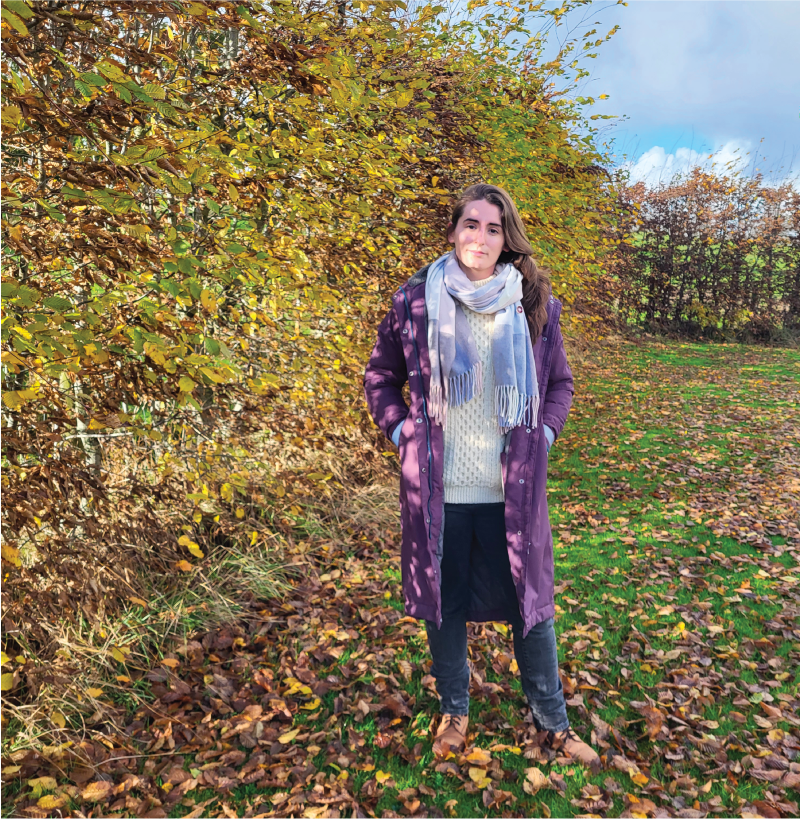
She believes having a specific person within a farm business who is responsible for sustainability is hugely valuable and will become more important as farmers are asked to meet specific environmental goals. However, she believes farmers will need support to do so. "Having a specific person within the business who deals with sustainability gives a contact within the business, but also means it does not take a back seat. I am the driver. "I will be looking at the [Journey to Net Zero competition] project, but also everything else we can do in terms of sustainability for the business. "The other side of my job will be the meat box business, as I feel that will help with sustainability." The business is also putting a greater emphasis on maximising production from forage, with all beef finished off grazed grass or silage and 70 per cent of this season's lambs finished off grass. Herbal leys have also been planted with the view to establishing more in the future. Alternative grazing systems will also be researched this winter with the view to potentially adopting rotational grazing next season as a way of boosting grass quality. |
FARM FACTS
|








